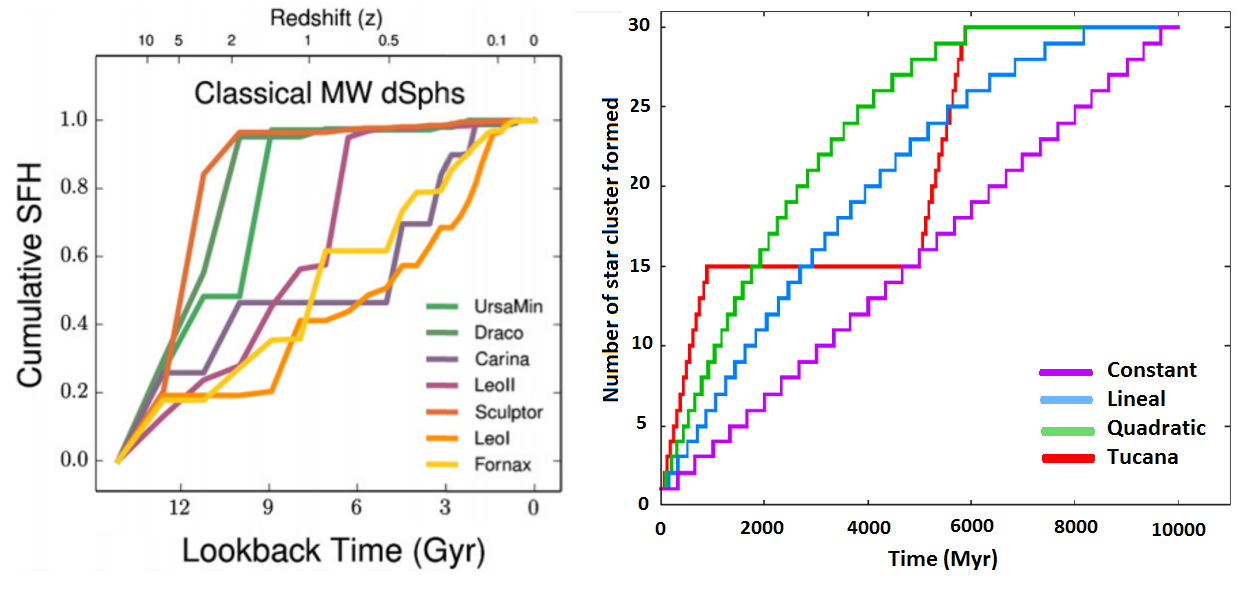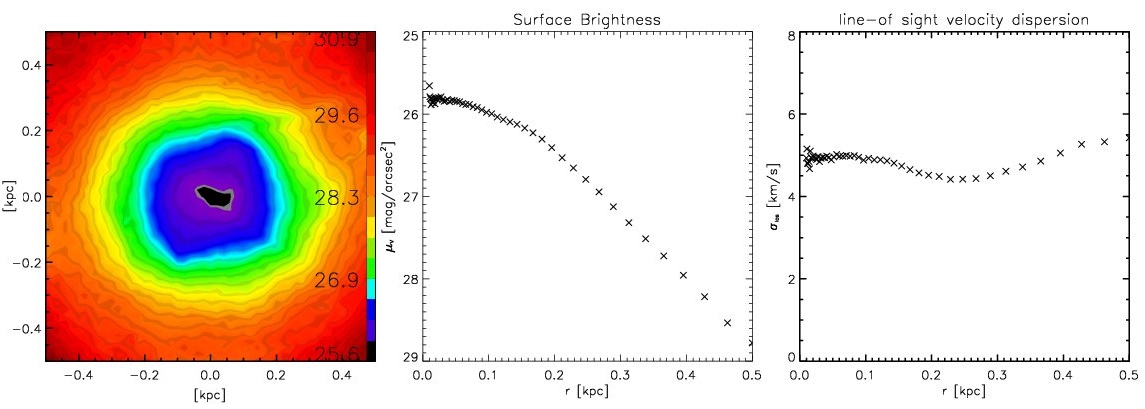Astronomers from UdeC postulate a new theory about dwarf spheroidal galaxy formation
Dwarf spheroidal galaxies are among the smallest and faintest galaxies known in the Universe. According to our understanding of the Universe, these galaxies are forming first in the smallest dark matter haloes, which can harbor a luminous galaxy. This implies that these objects are the smallest "LEGO" bricks from which larger galaxies are assembled.
The standard formation scenario for these objects needs other galaxies to interact with the progenitors of the dwarf spheroidal that are observed today. These theories predict that the smallest galaxies in the Universe were small rotating disk galaxies and once they interact with each other or with a major galaxy such as our Milky Way they are disturbed and transformed into what we see today as dwarf spheroidal galaxies.
A team of astronomers from the Theory and Starformation Group of the Department of Astronomy of the University of Concepción has proposed a different formation scenario. In this new theory, dwarf spheroidal galaxies are formed exactly as they are perceived today. The theory predicts that gas within a small halo of dark matter creates stars in the form of small clusters and associations of stars that dissolve over time and disperse their stars in the central region of the dark matter halo. Over time you get a luminous component (galaxy), which looks like a spheroidal dwarf galaxy. The resulting objects show all the strange attributes that are observed in dwarf spheroidal galaxies today, such as multiple cores or twisted contours.
"According to the model of dissolution of star clusters, dwarf spheroidal galaxies are formed by the fusion and dissolution of several star clusters formed in molecular gas and orbiting within a halo of dark matter. The first simulations based on this model were made by Dr. Paulina Assmann (UdeC) in which all the clusters were formed at the beginning of the simulation and the system was allowed to evolve for ten billion years (see figure 1).
"In this new work, we add star formation histories, i.e. forming the star clusters at different moments of the simulation, to resemble the star formation histories observed in dwarf spheroidal galaxies. The results of the simulations show that we can obtain objects similar to dwarf spheroidal galaxies, even forming the star clusters at different times", says author Alex Alarcón. (See figure 2 showing the star formation histories observed (left) and simulated (right)).
"Our models were often criticized, because we formed all the stars at the same time and not in different periods as seen in some dwarf spheroidal galaxies. With this simplification we could obtain the shape of the object and the movements of the stars correctly, but we could not predict the differences in the content of elements of the different stars, seen in dwarf spheroidal galaxies, resulting from the fact that we have multiple generations of stars within these objects", says Dr. Michael Fellhauer.
In this new study, the researchers show that their proposed models predict the same objects, even if stars (star clusters and associations) are formed according to the distribution observed in the abundances of elements.
"In addition, our models offer amazing predictions in which cases we can see dwarf spheroidal galaxies with star clusters and why most of them do not have any associated with them" concludes Fellhauer.
The simulations of this research were made on a 64-core computer with ~200 GB that is in the Department of Astronomy and the next step of the research will be to compare the simulations with the observations, to study the predictions of the cluster dissolution model.
"I'm working with Josh Simon of the Carnegie Observatories (Pasadena, USA), Andrés del Pino of the Space Telescope Science Institute (Baltimore, USA) and Michael Fellhauer (UdeC). According to our models, the stars that form in the same star cluster follow similar orbits, so we hope to detect groups of stars with the same chemical composition (since they were formed from the same gas cloud) and similar velocities in dwarf spheroidal galaxies." says Alarcón.
The research was published in the prestigious scientific journal "Monthly Notices of the Royal Astronomical Society" (MNRAS 2018, vol.473, p.5015-5025). "A possible scenario of formation for spheroidal dwarf galaxies - III. Adding histories of star formation to the fiducial model "is titled the research led by the astronomer UdeC, Alex Alarcón, who worked in conjunction with the researchers M. Fellhauer, D.R. Matus Carrillo, P. Assmann, F. Urrutia Zapata, J. Hazeldine and C.A. Aravena.
For more information, consult our website: http://theory-starformation-group.cl.
The complete original article can be downloaded here.



Comunicaciones Departamento de Astronomía




